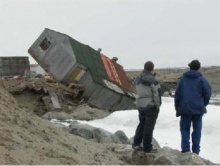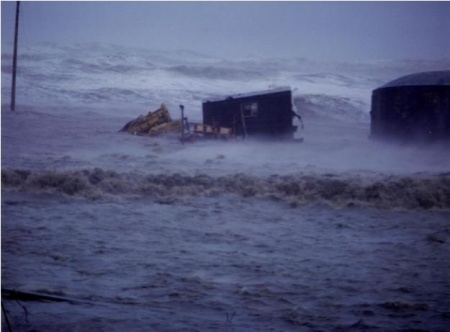Arctic 2007
Arctic Coasts at Risk
Goals:
- Assess the current state of the art knowledge on the impact of Global Climate Change reflecting in the Arctic coast: What do we know about the physical, biological, ecological, socio-economic status? Which models/scenarios for predicting trends do we have? What kind of human responses/governance systems are in place and how well established are the science policy links for informed decision making?
- Suggest new approaches and recommendations on the physical, biological-chemical coupling, integrated assessment and modeling, and governance and adaptation aimed to improve and strengthen science policy interfaces.
Participants:
Invitation was done through the workshop organizers.
Scientific Committee:
- Chris Cogan (IASC)
- Nicole Couture (IASC)
- Louwrens Hacquebord (IASC)
- Volker Rachold (IASC)
- Gotz Floser (LOICZ)
- Hartwig Kremer (LOICZ)
- Josef Pacyna (LOICZ)
- James Syvitski (LOICZ & CSDMS)
- Georg Hansen (local)
- Lars-Otto Reiersen (AMAP)
- Leslie King (IHDP)
- Oran Young (IHDP)
Description:
The Workshop report will comprise assessment, prognosis, and human responses of/to Arctic Change and thus be a link between and coastal focus update of the existing ACIA (Arctic Climate Impact Assessment) and AHDR (Arctic Human Development Report) reports, focused on Arctic coasts and people. In the working groups, physical, biological-ecological as well as socio-economic perspectives will be addressed. The physical perspectives of Global Change comprise changes in environmental forcing (by sea ice, wind and waves, rising sea level etc.), in permafrost stability, morphodynamics and river discharge into the Arctic Sea. The biological-ecological perspective covers biodiversity issues, biogeochemical cycles including pollution, ecosystem functioning and thresholds, and ecosystem goods and services. The socio-economic perspectives look upon new forms of land and sea use, governance systems linked to decision-making in the coastal zone (scales and participation), effectiveness of management, and adaptation strategies and frameworks.
Workshop Structure:
Plenary keynote lectures, including introduction to the working groups:
- Physical perspectives;
- Biological-ecological perspectives;
- Socio-economic perspectives
and reconfigured working groups:
- Physical, biological-ecological, socioeconomic coupling;
- Prognosis, integrated assessment and modeling; and
- Human responses: governance and adaptation.


